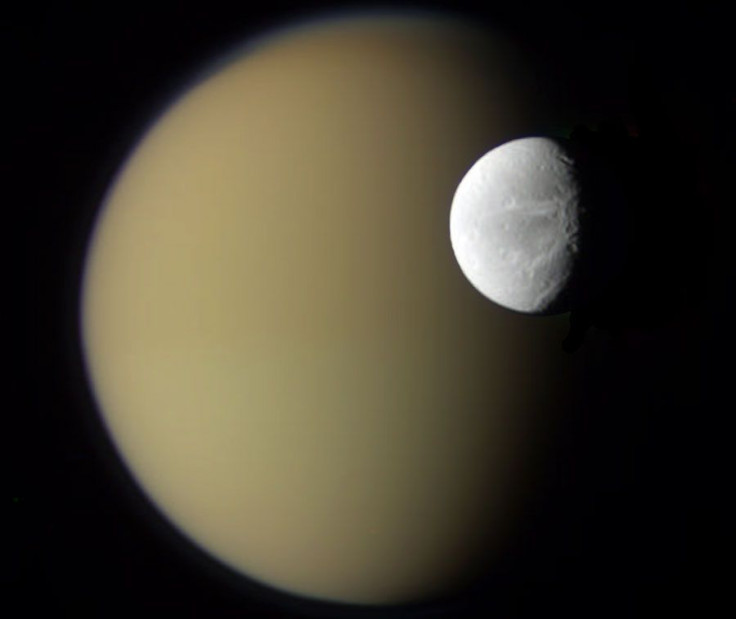Saturn Moon Titan Mystery Solved: Scientists Make Key Discovery About Atmosphere

KEY POINTS
- Scientists detected a chemical process that occurs in Titan's atmosphere
- Cosmic rays from outside the Solar System enter Titan's atmosphere
- The cosmic rays can affect the formation of nitrogen-bearing molecules on Titan
Scientists recently made a key discovery that could explain the atmospheric conditions of Titan, which is Saturn’s largest moon. According to the scientists, cosmic rays coming from beyond the Solar System are affecting the chemical process in the natural satellite’s atmosphere.
Titan is the only known moon to have its own atmosphere, which is actually much denser than that of Earth. Within this atmosphere are nitrogen-bearing organic molecules. Recently, a team of scientists was able to uncover how these molecules were formed. They presented their findings in a new study submitted for publication.
Using the Atacama Large Millimeter/Submillimeter Array (ALMA) telescope on Chile, a team of scientists was able to look into the chemical process that’s happening in Titan’s atmosphere. Through their observations, the scientists came across distinct chemical footprints, which have been identified as acetonitrile (CH3CN) and its rare isotopomer (CH3C15N).
The presence of these chemicals strongly indicates that cosmic rays from outside the Solar System are entering the moon’s atmosphere. This triggers a reaction within the atmosphere, which affects the formation of its nitrogen-bearing organic molecules.
“We found that the abundance of 14N in acetonitrile is higher than those in other nitrogen-bearing species such as HCN and HC3N,” scientist Takahiro Iino of the University of Tokyo said in a statement. “It well matches the recent computer simulation of chemical processes with high energy cosmic rays.”
According to the scientists, cosmic rays from beyond the Solar System make up half of the important chemical process that occurs in the atmosphere. The other one is ultraviolet (UV) light emitted by the Sun.
They explained that in the upper atmosphere, UV light could selectively destroy 15N-containing nitrogen molecules because the type of UV light that can interact with 14N14N is more easily absorbed at higher altitudes. This means that nitrogen-bearing molecules that form in the upper atmosphere tend to have more 15N.
The cosmic rays, on the other hand, can interact with 14-N containing molecules as they enter the atmosphere. This creates a significant discrepancy between the abundance of molecules with 15N and 14N.
“We suppose that galactic cosmic rays play an important role in the atmospheres of other solar system bodies,” the study’s co-author Hideo Sagawa of the Kyoto Sangyo University explained. “The process could be universal, so understanding the role of cosmic rays in Titan is crucial in overall planetary science.”
© Copyright IBTimes 2025. All rights reserved.




















